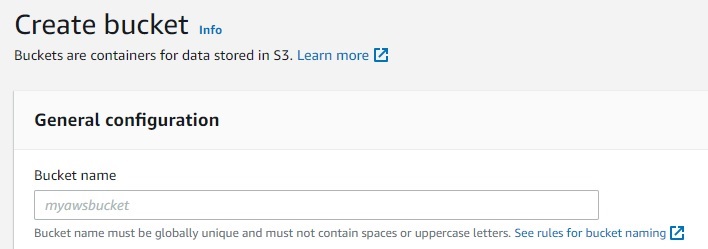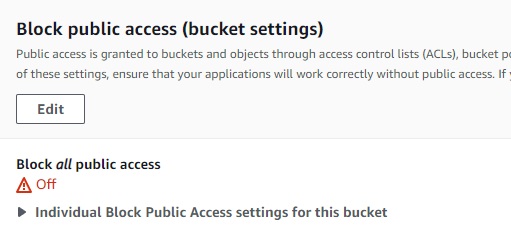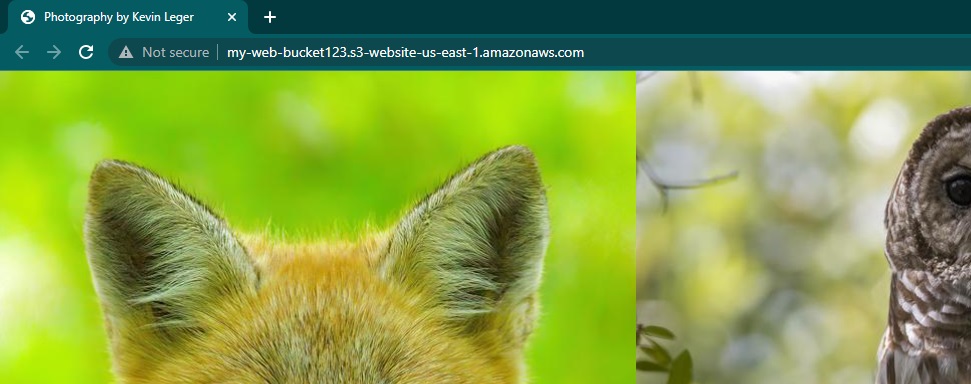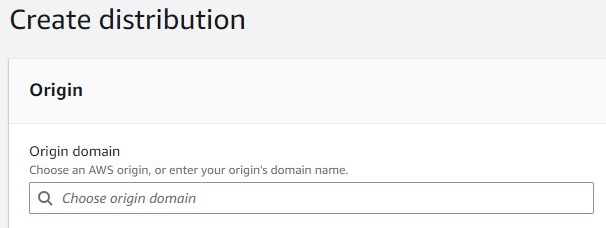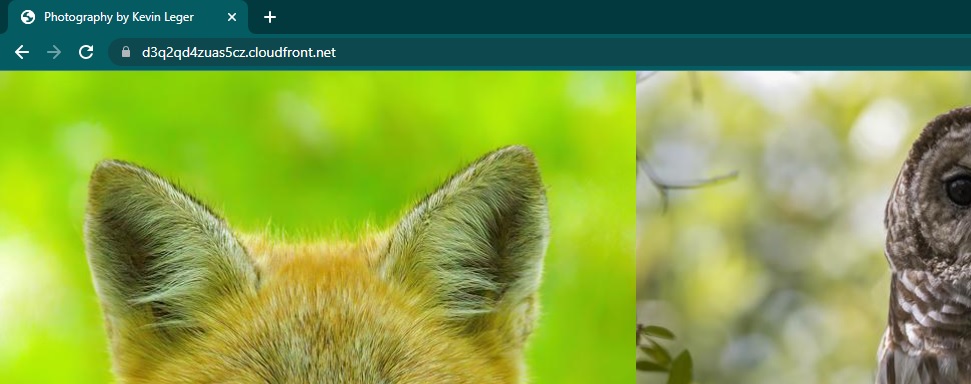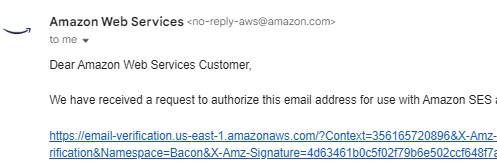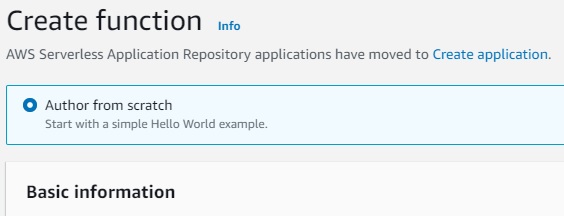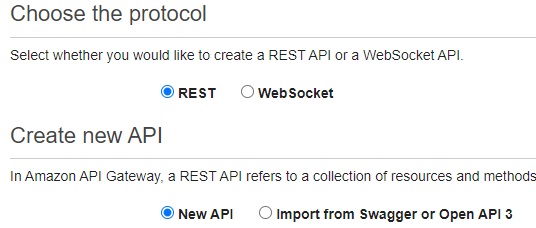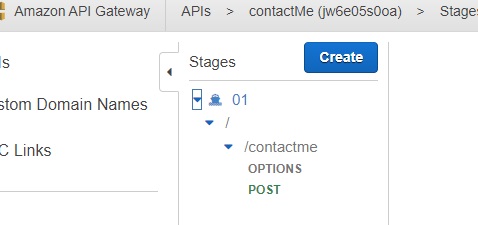This repository contains walkthroughs and Infrastructure as Code (IaC) scripts for building robust static website hosting architectures in AWS with features such as:
- Custom domain integration
- Accelerated content delivery
- Continuous Delivery (CD) pipeline
- Contact form backend and more
Visit kevinleger.com to check out a live example.
To get started, review the architecture overview to decide on what features to implement for your use case then follow along with the deep dives or launch the appropriate CloudFormation template in AWS.
The complete architecture can be seen below and is broken down into phases to separate features from one another.
- Phase1: S3
- Phase2: CloudFront
- Phase3: ACM and R53
- Phase4: API GW, Lambda, and SES
- Phase5: GitHub and CodePipeline
(click to expand)
-
AWS Certificate Manager (ACM) is a service that lets you easily provision, manage, and deploy public and private Secure Sockets Layer/Transport Layer Security (SSL/TLS) certificates for use with AWS services and your internal connected resources.
-
API Gateway is a fully managed service that makes it easy for developers to create, publish, maintain, monitor, and secure APIs at any scale.
-
CloudFormation is a service that helps you model and set up your AWS resources so that you can spend less time managing those resources and more time focusing on your applications that run in AWS.
-
CloudFront is a content delivery network (CDN) that accelerates delivery of static and dynamic web content to end users.
-
CodePipeline is a continuous delivery service you can use to model, visualize, and automate the steps required to release your software.
-
Lambda is a serverless, event-driven compute service that lets you run code for virtually any type of application or backend service without provisioning or managing servers.
-
Route 53 is a highly available and scalable Domain Name System (DNS) web service. You can use Route 53 to perform three main functions in any combination: domain registration, DNS routing, and health checking.
-
Simple Email Service (SES) is a cloud email service provider that can integrate into any application for bulk email sending.
-
Simple Storage Service (S3) is an object storage service that offers industry-leading scalability, data availability, security, and performance. You can use Amazon S3 to store and retrieve any amount of data at any time, from anywhere.
This section will cover the implementation of each phase in enough detail for anyone following along and getting their hands dirty. Every button click will not be captured as the AWS management console is pretty easy to follow and service layouts in the AWS console change overtime anyway.
NOTE: Throughout each phase there are my statements which are placeholder values that must be replaced by the actual values specific to your deployment. Example below:
arn:aws:s3:::MY-BUCKET-NAME/* ------SHOULD BE CHANGED TO------> arn:aws:s3:::cool-website-123/*
TODOS:
- add authentication and authorization phase(s)
- review IAM policy permisions for SES
- review any best practices SES configuration
- align order of iam statements throughout
Why: Quickly deploy a website with an unencrypted connection via HTTP
What:
-
AWS account and IAM user with administrative permissions
-
index document and any supporting assets for a website
Resources:
- Some free website templates
- AWS account getting started
- AWS management console
- S3 Documentation
- Configuring an index document
Begin by creating a new bucket in S3 with all the default settings applied and upload the website files to the bucket.
Now we need to adjust the permissions so that anyone can view the files in the bucket.
First, navigate to the permissions tab of the bucket and turn off block all public access.
Next, edit the bucket policy to allow any principal (symbolized by the asterik) to read objects from the bucket using the S3 GetObject action.
{
"Version": "2012-10-17",
"Statement": [
{
"Sid": "PublicReadGetObject",
"Effect": "Allow",
"Principal": "*",
"Action": "s3:GetObject",
"Resource": "arn:aws:s3:::MY-BUCKET-NAME/*"
}
]
}
Finally, navigate to the poperties tab and enable static website hosting. Make sure to specify the name of the website's index document which is commonly referred to as index.html.
Click on the bucket website endpoint to access the site via HTTP in a new tab.
Why: Encrypted connection via HTTPS, accelerated content delivery, origin behavior, and more
What:
- Completed Phase1
Resources:
First, disable static website hosting on the bucket since CloudFront will be setup to use the bucket's REST API endpoint.
Create a new CloudFront distribution and set:
- Distribution
origin domainto the REST API endpoint of the bucket - Add an
Origin Access Control (OAC)identity using the distribution wizard- Opt to manually add permissions to the S3 bucket
- Set the viewer protocol to
redirect http to https - Choose the price class that aligns with your budget and expected end user locations
- Enter the default root object for the website such as
index.html
Return to the website bucket then navigate to the permissions tab and turn block all public access back on.
Then edit the bucket policy to redefine the permissions to allow access from the cloudfront OAC identity.
{
"Version": "2012-10-17",
"Statement": [
{
"Effect": "Allow",
"Principal": {
"Service": "cloudfront.amazonaws.com"
},
"Action": "s3:GetObject",
"Resource": "arn:aws:s3:::MY-BUCKET-NAME/*",
"Condition": {
"StringEquals": {
"AWS:SourceArn": "arn:aws:cloudfront::MY-ACCOUNT-ID:distribution/MY-DISTRIBUTION-ID"
}
}
}
]
}
Access the website via HTTPS with the cloudfront distribution domain name which is located on the details section of the distribution and looks similar to: hj34l2kdfks.cloudfront.net
Why: more intuitive URLs for users to interact with, branding, and other capabilities with Route 53
What:
- Completed phase2
- A registered custom domain name
- A Route53 public hosted zone configured for the custom domain name
Resources:
First, request a new public SSL/TLS certificate entering
- domain name field set to a wildcard subdomain (e.g.,
*.example.com) - then add another domain name this time entering the root domain (e.g.,
example.com)
This setup allows one certificate to protect multiple subdomains such as www.example.com and blog.example.com in addition to the root domain example.com.
Keep all other settings default and complete the certificate request.
Note: The step above assumes the access and ability to modify DNS records to validate the request
Navigate to the certificate details page to see that the issuing status is pending validation. Note down the CNAME name and value data provided for each domain which will be used to validate the request finalizing the issuing process.
Create DNS records to validate the ACM certificate
- CNAME record for each domain listed on the ACM certificate using values from the ACM console
Create DNS records to route traffic to the cloudfront distribution domain name
- A alias record for the root domain
- AAAA alias record for the root domain (if IPv6 is enabled for the CF distribution)
- Repeat the steps above for any subdomains
Once the ACM certificate moves from pending to issued, edit the CF distribution general settings
- add the root domain to the alternate domain name field
- repeat the step above for any subdomains
- Select the public certificate issued by ACM in the Custom SSL certificate field
The website is now accessible from the custom domain via HTTPS
Why: capability for users to contact an admin or website owner via a designated email address
What:
- Completed phase1
- Contact form with a HTTP POST request integrated with the website
- Optional: completed Phase3 to use a custom domain with SES
Resources:
To get started, create a new identity in SES for each sender and receiver that will be used to exchange email.
Note: A single verified email address identity can be used as both the sending address and the receiving adress. This is a quick method to get running but may trigger spam/warning filters.
Once created, the identity will enter a verification pending status awaiting DNS records for Domains or clicking a verification link for emails.
Next, define a new IAM policy for Lambda with permissions that allow sending emails via SES.
{
"Version": "2012-10-17",
"Statement": [
{
"Effect": "Allow",
"Action": "ses:SendEmail",
"Resource": "*"
}
]
}
Next, create a role for lambda to assume during execution and attach the policy to this role.
{
"Version": "2012-10-17",
"Statement": [
{
"Effect": "Allow",
"Principal": {
"Service": "lambda.amazonaws.com"
},
"Action": "sts:AssumeRole"
}
]
}
Author a new lambda function from scratch
- name the function
- select the latest python runtime (python 3.9 at this time)
- expand 'change default execution role' then select the newly created role.
Once created, replace the existing code source with the contactForm.py script (also shown below) and deploy the changes.
import json
import boto3
def lambda_handler(event, context):
ses = boto3.client('ses')
print(event['name'])
body = 'Name : ' + event['name'] + '\n Email : ' + event['email'] + '\n Message : ' +event['desc']
ses.send_email(
Source = 'MY-SOURCE-EMAIL',
Destination = {'ToAddresses': ['MY-DESTINATION-EMAIL']},
Message = {'Subject':{
'Data':'New Communication From MY-WEBSITE',
'Charset':'UTF-8'
},
'Body':{
'Text':{
'Data':body,
'Charset':'UTF-8'
}
}}
)
return{'statusCode': 200,'body': json.dumps('wohoo!, Email sent successfully')}
Test the Lambda function by configuring a test event replacing the event JSON with the following:
{
"name": "value1",
"email": "value2",
"desc": "value3"
}
A successful test will return a message in the console and send the email.
Now all that is left is to connect the website to the Lambda function. Create a new REST API that will receive POST requests from the contact form then route the request to the lambda function.
Next, build out the API by clicking actions and:
- Create a new API resource and select enable CORS
- Create a new method and select POST
- Leave the integration type as Lambda and enter the function name/ARN
NOTE: If CORS is not enabled then the contact form will not work!
Now similar to Lambda, the API can be tested in the management console
- Select the resources tab
- Select the post method
- click on test or the lightning bolt right below
- Copy the same JSON event used to test the Lambda Function into the request body.
With the API created, click actions and deploy the API. Then navigate to the stages tab, expand the new stage, and select the POST method.
Finally, copy the POST invoke url and include the url in the website's contact form script. The invoke url should look similar to https://dfh341235s.execute-api.us-east-1.amazonaws.com/01/contactme
Why: Automate deployment of website changes
What:
-
Completed phase1
-
GitHub account
2a. Repository with the website files
Resources:
Create a new s3 bucket with default settings to contain the artifacts created by CodePipeline.
Navigate to the settings section of the CodePipeline console to create a new connection to GitHub. This will require signing into GitHub to integrate AWS connector as a GitHub app with your GitHub account/repository.
Define a new IAM policy with the minimum permissions required for CodePipeline to transfer data from GitHub to S3.
{
"Version": "2012-10-17",
"Statement": [
{
"Action": [
"codestar-connections:UseConnection"
],
"Resource": "arn:aws:codestar-connections:us-east-1:MY-ACCOUNT-ID:connection/MY-CONNECTION-ID",
"Effect": "Allow"
},
{
"Action": [
"s3:PutObject"
],
"Resource": [
"arn:aws:s3:::MY-WEBSITE-BUCKET-NAME/*",
"arn:aws:s3:::MY-ARTIFACT-BUCKET-NAME/*"
],
"Effect": "Allow"
},
{
"Action": [
"s3:GetObject"
],
"Resource": "arn:aws:s3:::MY-ARTIFACT-BUCKET-NAME/*",
"Effect": "Allow"
}
]
}
Next, create a role for CodePipeline to assume and attach the policy to this role.
{
"Version": "2012-10-17",
"Statement": [
{
"Effect": "Allow",
"Principal": {
"Service": [
"codepipeline.amazonaws.com"
]
},
"Action": [
"sts:AssumeRole"
]
}
]
}
Create a new pipeline
- select the artifact bucket for the artifact store (under advanced settings)
- select the new role defined earlier
Source Stage
- Set the action provider as GitHub (Version 2)
- Select the repository name and branch name where the website files are stored
- keep other settings as default
Build Stage
- Skip
Deploy Stage
- Select S3 for the deploy stage provider
- Select the website bucket for the deploy location
- Select extract before deploy
- keep other settings as default
Now source code changes in the GitHub repository will flow to the website bucket in S3 automatically.
Thanks to AJ and Ram for the website template used here.
Thanks to Adrian for his AWS training and this slack community for help with anything AWS.


